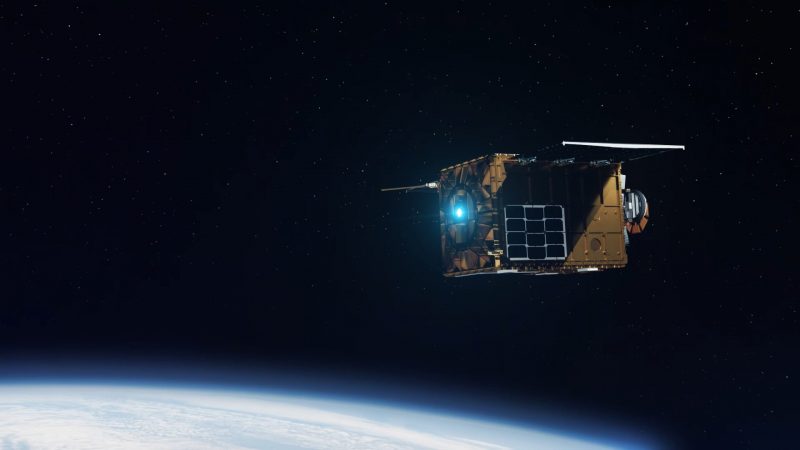TAMPA, Fla. — Starfish Space has secured $1.8 million from the U.S. Air Force’s AFWERX technology accelerator to develop its satellite guidance software, the in-orbit servicing startup announced Aug. 8.
The 18-month Tactical Funding Increase (TACFI) will support work on Cephalopod, designed to enable a satellite to dock with another spacecraft using only electric propulsion, to mature the technology for supporting government and commercial servicing missions at scale.
Starfish planned to test the software on its microwave-sized demonstrator Otter Pup, which was due to rendezvous with an SN3 space tug from rocket developer Launcher after launching together on a SpaceX Falcon 9 mission in June.
However, Otter Pup was deployed earlier than planned, along with other payloads, after an anomaly on SN3’s attitude control system put the tug into a spin.
Otter Pup also experienced high rates of rotation following its emergency deployment and Launcher later lost contact with SN3, making it unlikely that the mission could continue as planned.
Ari Juster, who leads Starfish’s strategy and operations, told SpaceNews the Kent, Washington-based venture expects to provide an update on the mission in the coming weeks.
Otter Pup “is still alive and we remain in communication with it,” Juster said, “though there are multiple challenges we are still working on,” including uncertainty around the satellite’s health given its rough deployment.
“Each of these present hurdles we need to overcome to have a chance to pursue Otter Pup’s mission of performing the first-ever docking of two commercial satellites in low-Earth orbit,” he said Aug. 8 via email.
Starfish has plans to follow Otter Pup up with full-scale Otter spacecraft, which are bigger than a mini-fridge and designed to extend the operational life of a satellite in geostationary orbit once docked.
In low Earth orbit (LEO), Starfish plans to use Otter to dock with a defunct satellite, pull it into a de-orbit trajectory, and then detach and raise itself to remove other pieces of debris.
Otter Pup fate
Starfish had planned to use Otter Pup to demonstrate its rendezvous, proximity operations, and docking (RPOD) technologies, including software for determining the relative position of a docking target and for planning trajectories.
The software was capable of taking Otter Pup in from several kilometers away for docking without any human input, according to Starfish, although it had planned multiple time windows for humans to halt the trajectory sequence if needed.
An earlier version of Cephalopod flew onboard Orbit Fab’s Tanker-001 Tenzing LEO refueling demo mission in 2021.
A successful Otter Pup mission would have validated Cephalopod’s ability to support RPOD missions.
However, Juster said there are still many potential tests Starfish could run Cephalopod through to help validate the technology that do not require Otter Pup to complete a full docking mission.
Cephalopod’s development can also still continue terrestrially, regardless of Otter Pup’s status.
“While the purpose of Otter Pup is to validate Starfish technology on-orbit, the actual development work, including ongoing testing of our software in simulation, happens here on Earth every day,” he added.
Starfish announced in March that it had raised $14 million to develop its technology in a funding round led by insurance giant Munich Re’s venture capital arm.
